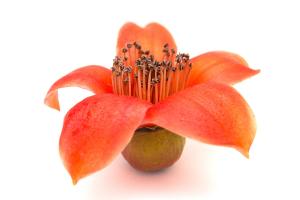How to Set Up Water Purifier Plant
Providing clean and safe drinking water is a fundamental human right. Unfortunately, some areas, whether due to natural or human-made reasons, have water sources contaminated with harmful bacteria, chemicals, or other pollutants. Installing a water purifier plant is one of the most effective ways to remove these impurities and produce potable water. Here are the steps to set up a water purifier plant.
1. Conduct a Water Analysis
The first step in building a water purifier plant is to obtain a water analysis report that shows the contaminants present in the source water. The report will guide you in selecting the most appropriate technology for the water treatment system, as different contaminants require different treatment methods. This step is crucial, as a wrong choice of equipment may lead to poor quality water or unnecessary expenses.
2. Select the Treatment Process
Based on the water analysis report, choose the water treatment technology that can efficiently remove the identified contaminants. Common water treatment processes include sedimentation, filtration, disinfection, distillation, and membrane filtration. Combining multiple processes may also be necessary for a more thorough purification process.
3. Choose the Equipment and Materials
After determining the treatment process to use, select the necessary materials and equipment. Examples of materials include activated carbon, sand, gravel, and ion exchange resins. Equipment required will depend on the chosen purification process, but some of the commonly used equipment includes pumps, valves, tanks, and meters. The quality and capacity of the equipment and materials should be considered to ensure efficient and long-lasting operation.
4. Design the Plant
After selecting the materials and equipment, design the plant layout. Designing the plant involves determining the location of the plant, the source of energy and water, and the placement of the equipment. It's important to ensure that the plant is easy to manage, maintain, and upgrade in the future.
5. Install and Commission the Plant
Once the plant design is ready, commence with the installation process. Install the equipment and materials according to the design and manufacturer's specifications. After installation, commission the plant, which involves testing the plant performance, verifying the water quality, and confirming that the plant operates as intended.
6. Regular Maintenance and Monitoring
After commissioning, it's essential to monitor and maintain the water purifier plant to ensure optimal performance. Regular maintenance activities include equipment cleaning, replacement of worn-out parts, calibration, and troubleshooting. A proper maintenance schedule should be established to avoid unexpected breakdowns, which may lead to water contamination or supply interruptions.
Conclusion
Setting up a water purifier plant requires careful planning and execution, starting from obtaining a water analysis report to the commissioning and maintenance of the plant. It's crucial to ensure that the plant generates safe and clean drinking water, conforming to the set quality standards to protect public health. Installing a water purifier plant is a critical investment that contributes significantly to solving the water scarcity and pollution problem in many areas.

 how many times do yo...
how many times do yo... how many planted tre...
how many planted tre... how many pine trees ...
how many pine trees ... how many pecan trees...
how many pecan trees... how many plants comp...
how many plants comp... how many plants can ...
how many plants can ... how many plants and ...
how many plants and ... how many pepper plan...
how many pepper plan...































